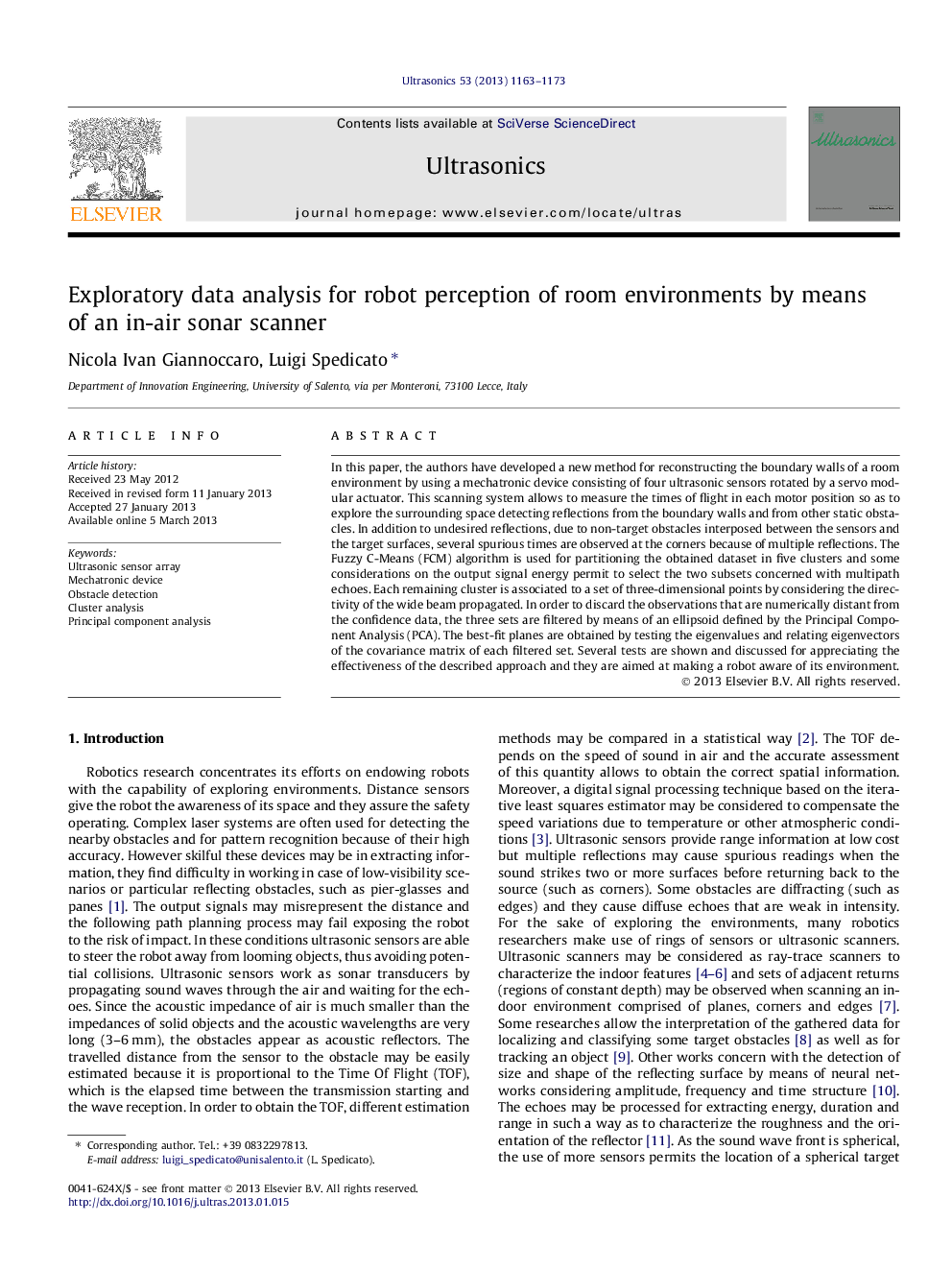| Article ID | Journal | Published Year | Pages | File Type |
|---|---|---|---|---|
| 1758925 | Ultrasonics | 2013 | 11 Pages |
In this paper, the authors have developed a new method for reconstructing the boundary walls of a room environment by using a mechatronic device consisting of four ultrasonic sensors rotated by a servo modular actuator. This scanning system allows to measure the times of flight in each motor position so as to explore the surrounding space detecting reflections from the boundary walls and from other static obstacles. In addition to undesired reflections, due to non-target obstacles interposed between the sensors and the target surfaces, several spurious times are observed at the corners because of multiple reflections. The Fuzzy C-Means (FCM) algorithm is used for partitioning the obtained dataset in five clusters and some considerations on the output signal energy permit to select the two subsets concerned with multipath echoes. Each remaining cluster is associated to a set of three-dimensional points by considering the directivity of the wide beam propagated. In order to discard the observations that are numerically distant from the confidence data, the three sets are filtered by means of an ellipsoid defined by the Principal Component Analysis (PCA). The best-fit planes are obtained by testing the eigenvalues and relating eigenvectors of the covariance matrix of each filtered set. Several tests are shown and discussed for appreciating the effectiveness of the described approach and they are aimed at making a robot aware of its environment.
► Analysis of an ultrasonic scanner for accurately reconstructing three room walls. ► New energy based indicator for detecting spurious times of flight due to multiple reflections. ► New algorithm based on the FCM clustering and PCA to reconstruct the walls. ► Comparison of the reconstructions with the RANSAC outcome.
